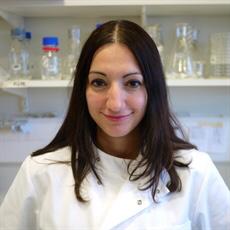Continua la collaborazione tra il liceo linguistico "Cattaneo dall'Aglio" e Redacon tramite la rubrica "Speakeasy" curata direttamente dagli studenti, dell'anno scolastico 2019-2020.
Zania Stamataki works at the University of Birmingham both in class and in its laboratory of viral immunology. In her article in the Guardian she investigates why viruses like Covid-19 can become so deadly.
Dr Stamataki introduces Dr Ed Newman, a virologist who has had the opportunity to observe how a virus can devastate entire villages in his travels to Africa and now works in the UK to help tackle the emergency. It is quite interesting how a micro cell can create such devastations. To make people understand the real situation of a pandemic, some virologists even mention films about the zombie apocalypse. But fortunately few viruses kill us within a few days of being infected. For a long time Newman searched for hemorrhagic fever viruses. Ebola and Marburg, for example, are transmissible through contact with infected body fluids. However, these viruses are contained by experienced international teams whereas viruses that cause a simple cold find a free entrance among populations.
But many questions arise: what would happen if a worse pandemic than Covid-19 hit the globe?
First of all, viruses follow rules to move forward and are unable to reproduce on their own, they always need a host cell to reproduce. A virus invades cells and, by using the cellular structures of the host cell, creates new viral molecules, then assembles those components and finally releases new viruses to infect other cells. If during this process the tissues are damaged, functional insufficiency of organs and systems can ensue, which can lead to the death of the host together with the virus. This is the reason why the most dangerous viruses are not always very successful. To survive, they must be able to transmit their material between cells, without exaggerating.

Viruses that cause respiratory infections fall into this category. Disease prevention centers in the United States have assessed that children have many more colds than adults in a year. But anyone who has a healthy immune system needs not worry.
We know that Sars-Cov-2 is a threatening virus, because in some patients it causes serious respiratory problems, with a mortality rate from about 1% to 7%.
The virus is described as a spy which tries to hide itself and acts as a master of disguise.
In fact if viruses want to evade recognition by immune cells, they must change their protein coat frequently. Viruses are able to transform thanks to small alterations in their genetic material called mutations.
These alterations can’t be too subtle but neither too drastic because in the first case our antibodies would identify the viral coat, whereas in the second case the mutations could inactivate the virus. The experts at this game are influenza viruses which use ribonucleic acid, RNA, which evolves very rapidly, as their genetic material.
Nowadays we know that influenza mutations can cause millions of deaths and every year virologists produce seasonal vaccines for flu which evolves over the months.
Luckily, even if Coronavirus has RNA genomes too, it isn’t able to change as fast as flu does because of the size of its genomes. That means that there are many more opportunities for mutations to go wrong. This is very good news for us and also for vaccine development, but we need more information to create a very effective and durable vaccine.
How does a virus go on to achieve world domination?

Sars-cov-2 has an effective route of transmission: the respiratory one which spreads the virus also thanks to our coughs and sneezes. Moreover these particles can survive some time on surfaces outside the body.
For this reason it’s important to respect and maintain safe distance and isolate patients.
Sars-cov-2 also has a lipid-containing coat which we can fight just by accurately washing our hands with soap that breaks down fats.
To stop this pandemic we need teams of epidemiologists to decipher patterns of viral spread and molecular virologists to track virus evolution so we can update our defences.
We also need immunologists to help us to understand how the body fights the virus and aid vaccine research. We also need trained and well-equipped doctors and nurses to safely look after infected people.
It’s also important to maintain hygiene both for structures like hospitals but also for all the people like doctors and nurses who work hard to contain outbreaks and prevent transmission.

This emergency has shown us how important our behavior is and each of us can personally help break the transmission cycle.
When a pandemic like the one we’re living spreads, we rely on the World Health Organization to report new outbreaks and on international teams of experts to act rapidly to contain them.
When someone like Newman or Public Health Rapid Support Team receives a pick up call to join the other defenders, not everyone welcomes them on location also because people are understandably reluctant to keep away from their infected beloved.
In the end, it’s essential to fund doctors and teams also by providing them with updated equipment because their work is vital.
Martina Ceccarelli, Arianna Merzi, Classe 4°Q, Liceo Linguistico Dall’Aglio
****
Perché il Covid-19 è così efficiente?
Zania Stamataki lavora all’università di Birmingham sia come insegnante sia nel laboratorio di immunologia virale. Nel suo articolo sul Guardian indaga sul perché virus come il Covid-19 possano diventare così mortali.
La dottoressa Stamataki introduce il dottor Ed Newman, un virologo che ha avuto l'opportunità di osservare come un virus può devastare interi villaggi nei suoi viaggi in Africa e ora lavora nel Regno Unito per aiutare a far fronte all’emergenza.
È decisamente interessante come una quasi cellula possa creare tali devastazioni. Per far capire la reale situazione di una pandemia, alcuni virologi menzionano persino film sull'apocalisse degli zombi. Ma fortunatamente solo pochi virus uccidono entro pochi giorni dall'infezione. Per molto tempo Newman ha cercato i virus della febbre emorragica. Ebola e Marburg, ad esempio, sono trasmissibili attraverso il contatto con fluidi corporei infetti. Tuttavia, questi virus sono contenuti e controllati da team internazionali di esperti. I virus che causano un semplice raffreddore trovano invece via libera tra le persone.
Ma molte domande sorgono: cosa accadrebbe se una pandemia peggiore di questa colpisse il pianeta?
Prima di tutto, i virus seguono regole per riprodursi e non sono in grado di farlo in modo autonomo, ma necessitano sempre di una cellula ospite. Un virus invade le cellule e, utilizzando le strutture cellulari della cellula ospite, crea nuove molecole virali, quindi assembla quei componenti e infine rilascia nuovi virus per infettare altre cellule. Se durante questo processo i tessuti vengono danneggiati, si può arrivare all’insufficienza funzionale di organi e apparati, che può portare sino alla morte dell’organismo ma anche del virus. Questo è il motivo per cui i virus più pericolosi non sempre hanno molto successo. Per sopravvivere, devono essere in grado di trasmettere il loro materiale tra le cellule dell’ospite, senza esagerare.
I virus che causano infezioni respiratorie rientrano in questa categoria. I centri di prevenzione delle infezioni negli Stati Uniti hanno stabilito che i bambini hanno molti più raffreddori rispetto agli adulti in un anno. Ma chiunque abbia un sistema immunitario sano non si deve preoccupare.
Sappiamo che Sars-Cov-2 è un virus minaccioso, perché in alcuni pazienti provoca gravi problemi respiratori, con un tasso di mortalità che varia dall’1% al 7%.
Il virus è descritto come una spia che cerca di nascondersi e agire come un maestro del travestimento. Infatti se i virus vogliono nascondersi dalle cellule immunitarie, devono cambiare frequentemente il loro rivestimento proteico. I virus sono in grado di mutare grazie a delle piccole alterazioni nel loro materiale genetico chiamate mutazioni.
Queste mutazioni non devono essere né troppo leggere né troppo drastiche, perchè nel primo caso i nostri anticorpi indentificherebbero il virus mentre nel secondo caso le mutazioni potrebbero inattivare il virus. Gli esperti nell’attuare questo gioco sono i virus influenzali che usano l’acido ribonucleico (RNA), che muta velocemente, come loro materiale genetico.
Oggi sappiamo che le mutazioni influenzali possono causare milioni di morti e ogni anno i virologi producono vaccini per l’influenza che evolve nel corso dei mesi.
Fortunatamente anche se il Coronavirus ha un genoma a RNA, non è in grado di cambiare velocemente come fanno le influenze a causa della grandezza del suo genoma. Questo significa che ci sono molte più opportunità per le mutazioni virali di non ottenere l’effetto desiderato. Per noi questa è una buona notizia e lo è anche per lo sviluppo di un vaccino, ma abbiamo bisogno di più informazioni per creare un vaccino sicuro e possibilmente a effetto permanente.
Come fa un virus a conquistare il dominio del mondo?
Sars-Cov-2 ha un modo di trasmissione efficace: quello respiratorio che diffonde il virus attraverso i nostri colpi di tosse e starnuti, inoltre queste particelle possono sopravvivere per qualche tempo su superfici esterne al corpo.
Per questa ragione è importante rispettare le regole, mantenere le distanze di sicurezza e isolare i pazienti.
Sars-Cov-2 ha anche un mantello contenente lipidi che possiamo sconfiggere anche solo lavandoci accuratamente le mani con un sapone che distrugge il tessuto lipidico.
Per fermare questa pandemia abbiamo bisogno di un team di epidemiologi che comprendano i modelli di diffusione virale e virologi molecolari per tracciare l’evoluzione del virus così da poter tenere aggiornate le nostre difese.
Abbiamo inoltre bisogno di immunologi che ci aiutino a capire come il corpo combatte il virus e aiutare la ricerca di un vaccino. Necessitiamo anche di medici ed infermieri esperti e ben equipaggiati che si occupino in sicurezza dei contagiati.
E’ anche molto importante mantenere l'igiene sia nelle strutture come gli ospedali, sia per tutte le persone che lavorano al loro interno come dottori e infermieri per contenere focolai ed evitare trasmissioni.
Questa emergenza ci ha mostrato quanto sia importante il nostro comportamento e che ognuno di noi può aiutare a fermare l’epidemia.
Quando una pandemia come quella che stiamo vivendo si diffonde, facciamo affidamento all’Organizzazione Mondiale della Sanità per segnalare nuovi focolai e team di esperti che agiscano velocemente per contenerli.
Quando qualcuno come Newman o i team di assistenza rapida per la salute ricevono una chiamata per unirsi ad un altro gruppo di difensori, non tutti li accolgono sul posto a braccia aperte anche perché siamo tutti comprensibilmente riluttanti a separarci dai nostri cari.
Infine è essenziale finanziare questi medici e gruppi di lavoro fornendo strumentazione adeguata perché il loro lavoro ci salva la vita.
Martina Ceccarelli, Arianna Merzi, Classe 4°Q, Liceo Linguistico Dall’Aglio








